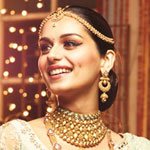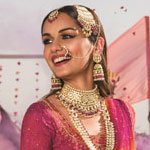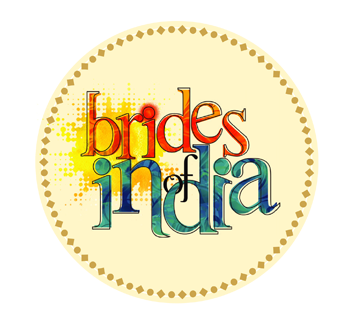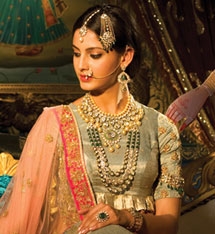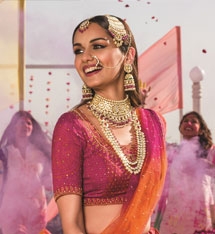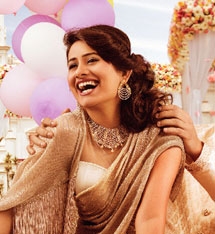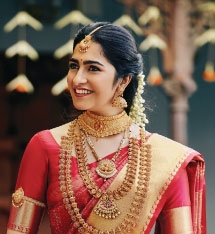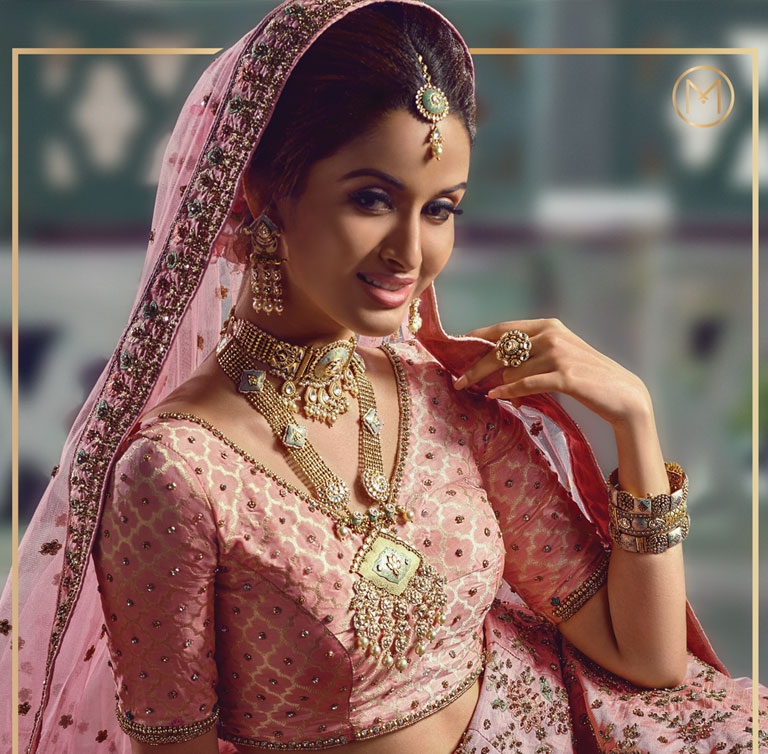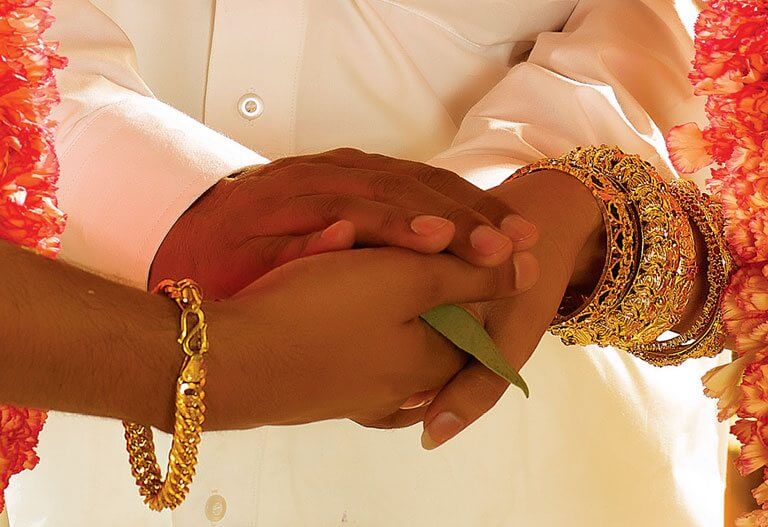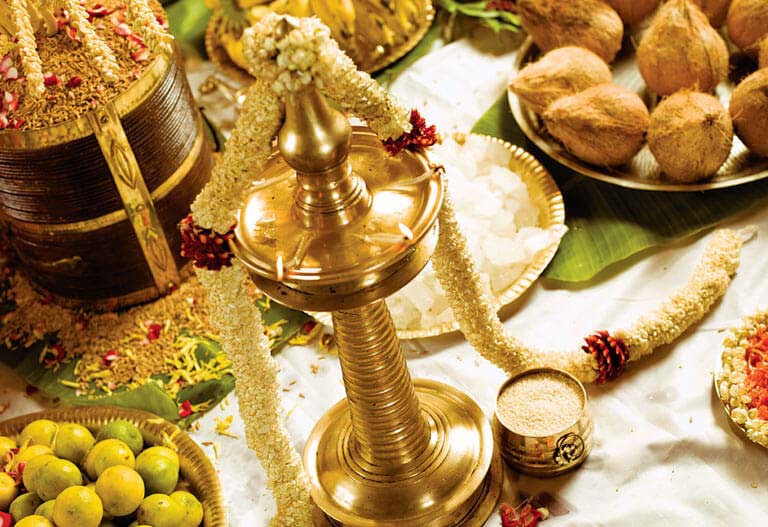-
Home2023 EditionEditionEditionCelebration brideCelebration BrideRoyal bride6Fashion brideFashion Bride
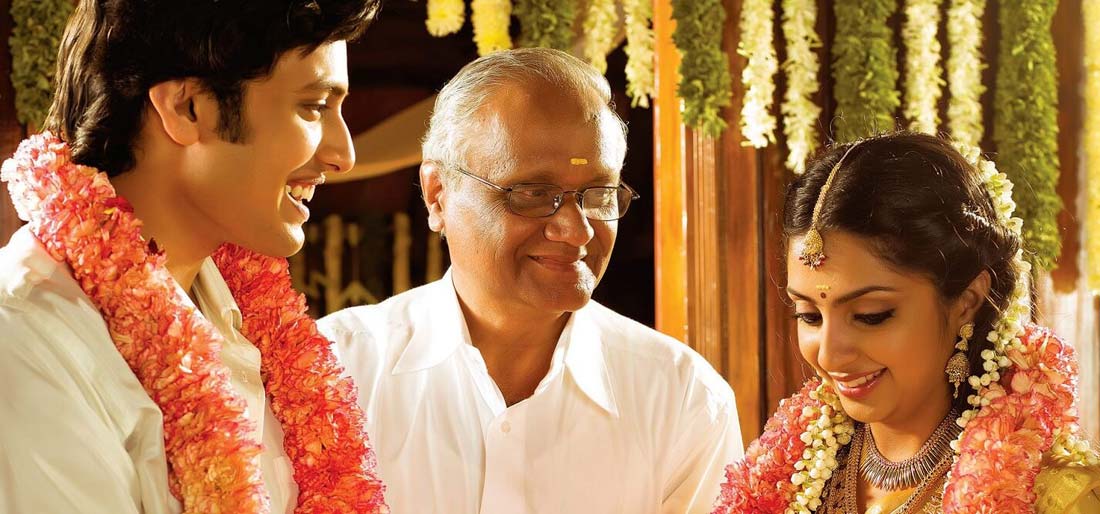
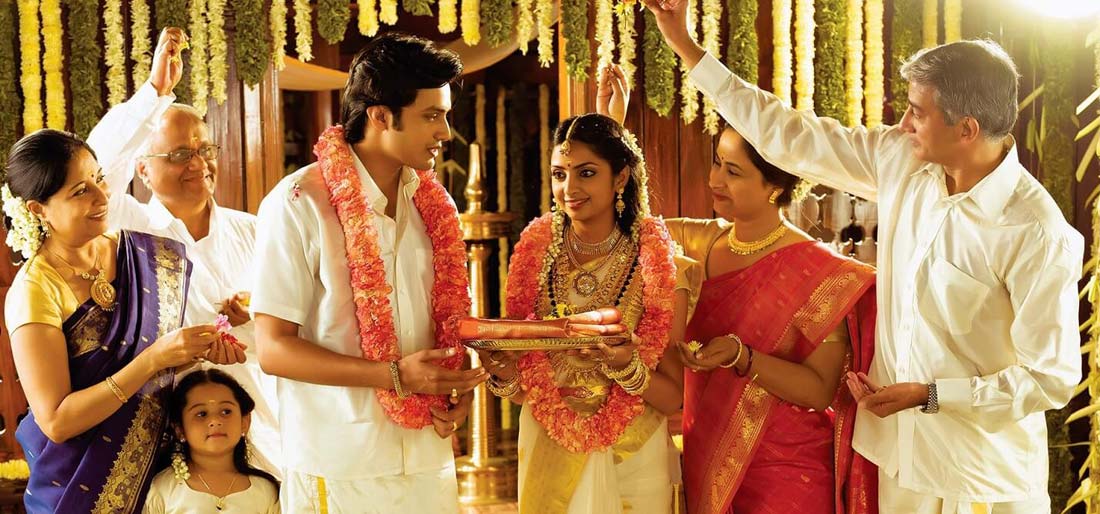
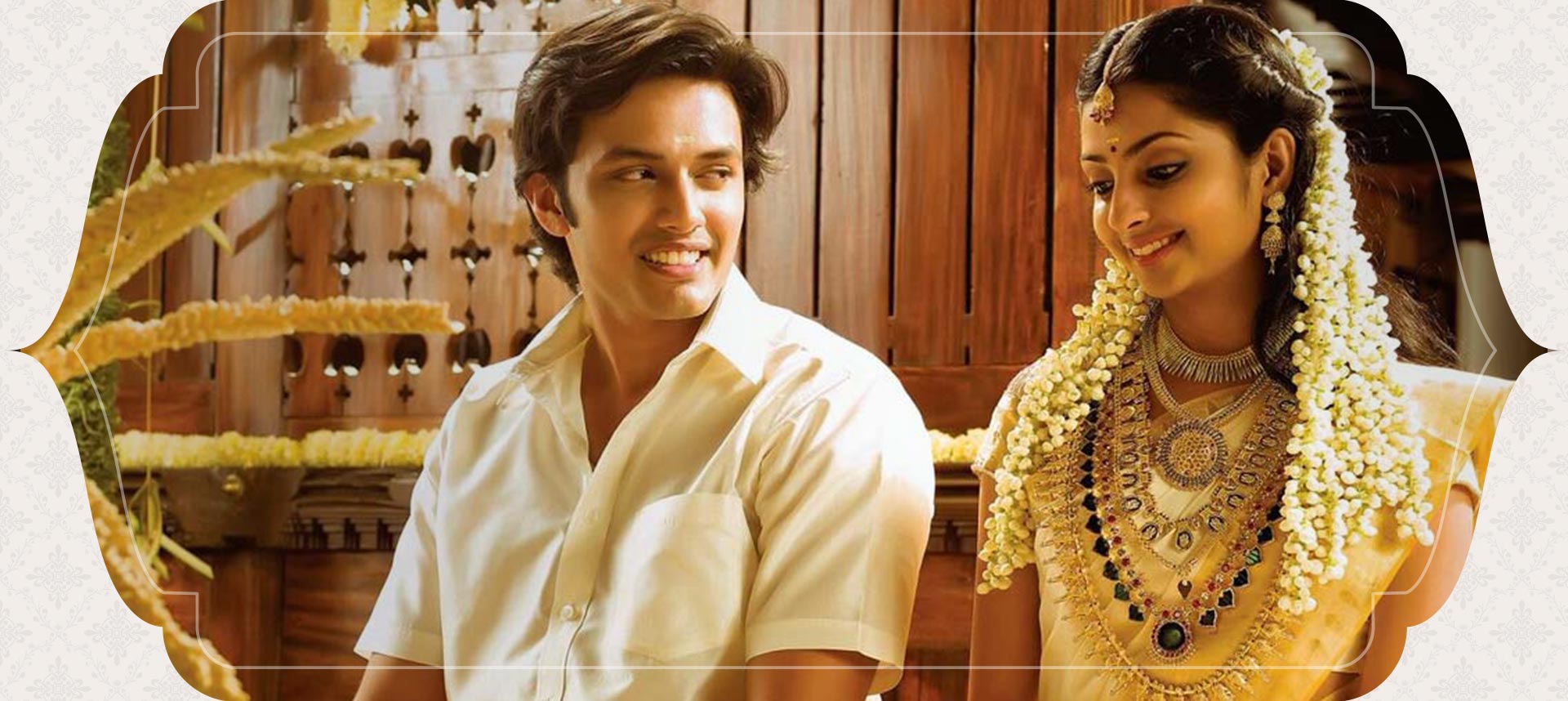
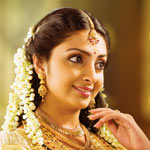
Kerala Nair
- HOME
- South Indian Bride
- Kerala Nair
BackRituals
Wedding Day Rituals
• Namaskaram (Receiving blessings from elders in the family) – It is said and believed that no auspicious occasion can begin without blessings from elder members of the family. This stands applicable for marriages as well. On the auspicious wedding day, the holy ‘Thali’(malgalyasutra) is taken to the temple to receive blessings from the Almighty. This is done by all the elderly members of the bride’s family. On their return, the bride touches the feet of all the elders and seeks their blessings, before she goes to the wedding venue. The marriage can take place at a kalyana mandap, a Guruvayur temple or even at the ancestral home of the bride. It is believed that getting wedded at the Garuvayur Temple implies getting blessings from Lord Vishnu. The wedding follows Gandharva Vivaha rituals, which are prominent among the various Hindu marriage rituals.
• The Main Wedding (Thalikettu and Pudavakodukkal) – This is the main wedding ceremony of the Kerala Nair caste. After the groom and his family members and friends arrive at the wedding venue, they are given a grand and warm welcome by the family members of the bride. Traditional music in the form of thayil and nadaswaram are played during this time. Traditional brass lamps are lit and the groom and his family are welcomed. The feet of the groom are washed by the bride’s brother and then there is a ritual of aarthi of the groom by female relatives of the bride.
The groom is made to sit on the right side of the madap and he has to face towards east. Then amidst loud nadaswaram the bride is brought into the mandap by either the father, maternal uncle or any female relative. She is made to sit on the left of the groom. As the muhurtam approaches, the groom ties the sacred ‘thali’ around the neck of the bride. Drums are played when the groom ties the holy yellow thread. There is also a ritual that the groom has to gift a saree to the bride at this moment. This ritual is known as pudamuri. The mother-in-law of the bride also ties a chain to the bride’s neck and this symbolizes that he has accepted her as her daughter-in-law. This ritual is followed by garland exchange.
After garlands are exchanged between the couple, the bride’s father places the bride’s right hand into the groom’s right hand, signifying that he is handing his daughter to the groom in holy matrimony. This is the ‘kanyadaan’ ritual and is an emotional moment for the bride and her father. Holding hands, the couple goes around the holy fire three times. This is the end of the main marriage ceremony - Thalikettu and Pudavakodukkal.
Once this ceremony is over, the couple is taken to a separate room where they receive blessings and gifts from their elders and friends. This is followed by the grand meal, also known as sadhya. The meal consists of 25 items and is served on a plaintain leaf. The items include rice, three kinds of pickles, olan, pacchari, avail, kalam, curries and sweets, pappads, toran, payasam and chaka prathaman or paladaaprathaman. All the items are traditional vegetarian dishes.
Post wedding rituals
Kerala Nair wedding does not get over with the wedding ceremony and the gala feast. There are some post wedding rituals as well that take place.
• Grihapravesham – At the perfect auspicious moment, the groom takes the bride to his home. Some family members of the groom are also present. On reaching home, the bride holds a traditional brass lamp in her hand and walks into the house putting her right foot in first. The whole house is lit with lamps so that it looks bright. The ritual is known as kudivep. Then her in-laws shower her with gifts like clothes, jewelry and other ornaments.
Wedding attire and jewlery – integral part of the marriage
After taking a detailed look into the rituals of Kerala Nair marriage, it is now time to take a look at the wedding attire of the bride and the groom for the most auspicious ceremony of their lives. The groom has to wear a white silk dhoti with golden border and an angavastram that covers his body. Wearing a gold chain and gold bracelet is mandatory for the groom. Rings are also worn on the fingers. This completes the wedding attire of the groom.
The bride is the one who is decked up grandly for her wedding day. She wears a white silk saree with golden border. She is decked up in jewelry from head to toe. If you take a look at a traditional Kerala Nair bride, you will be surprised to see that great volume of gold that she wears for the special occasion. A Nair girl’s jewelry box is called as aamaadapetti. If you take a look at the aamaadapetti of a Nair bride, you are sure to find some of the finest jewelries for all parts of the body. There are innumerable kinds of ornaments for the neck and are known by different names like Minnum Maniyum, Naagapadam, Naalupanti, Mullamottu Mala, Addiyaal, Jnali Kuzhal, Kantasaaram, Maanga Mala, Ponnu-Nool, Arimbu Mani, Padakka Thali, Rasi Thali, Kasu Mala, Elekka Thali etc.
Along with the neck ornaments, the bangles also need special mention. The Simha Kada, Ashtalakshmi Vala and Kattikappu are commonly worn by the bride. Oddiyanam, the wait ornament is also very special for the occasion. Rings as well as studs can be worn for the nose and they are known as Mookuthis. These were mainly of diamonds or ruby. Padaswaram or Thala are worn on the ankles as it makes a sweet sound when the bride walks. Earrings worn are also heavy and sometimes they have extensions to the whole ear lobe and called Toda. Jhimiki is placed between the hair partings and comes on the forehead. Fingers are adorned with heavily embellished and stone encrusted rings called Pavithrakkettu. Along with use of heavy gold, the jewelries have the best of diamonds, rubies, pearls, emeralds and other precious and semi-precious stones to enhance their beauty.Useful Links Scheme Payment(India only)
Make an Appointment Build your Custom Jewellery Smart Buy Offers New Arrivals Exclusive CollectionCustomer ServiceMalabar Gold & Diamonds
402, Valecha Chambers, Plot No. B-6,
New Link Road, Opp. Infinity Mall,
Andheri (W) ,
Mumbai - 400053. +91 22 62300916 care.in@malabargoldanddiamonds.com
